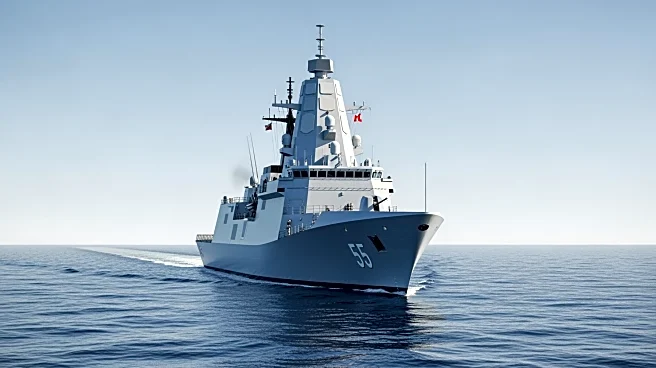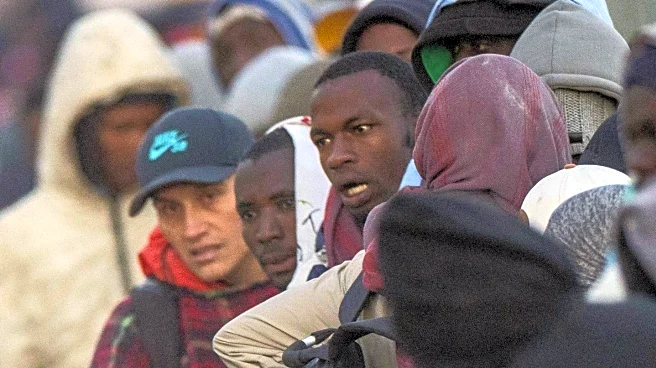What's Happening?
India and the Philippines have launched their first joint naval exercises in the disputed South China Sea, a move that has drawn attention due to the ongoing territorial disputes in the region. The exercises, which took place over two days, involved various
naval operations including rendezvous operations, communication checks, air defense exercises, and maneuvering drills. The Armed Forces of the Philippines chief of staff, Gen. Romeo Brawner, reported that the exercises were successful and expressed hopes for future joint maneuvers. Despite being shadowed by Chinese forces, no untoward incidents occurred during the drills. The exercises coincided with Philippine President Ferdinand Marcos's visit to India, aimed at deepening maritime ties and exploring cooperation in defense, pharmaceuticals, and agriculture.
Why It's Important?
The joint naval exercises between India and the Philippines are significant as they represent a strategic partnership in a region marked by territorial disputes, particularly with China. The South China Sea is a critical global trade route, and China's expansive claims have led to confrontations with several countries, including the Philippines. By conducting these exercises, India and the Philippines are signaling their commitment to maritime security and regional stability. This move could potentially alter the balance of power in the region, as it challenges China's dominance and encourages other nations to engage in similar partnerships. The exercises also highlight the growing importance of multilateral cooperation in maintaining a rules-based international order.
What's Next?
The successful completion of the joint naval exercises sets the stage for further military collaboration between India and the Philippines. Both countries have expressed interest in continuing joint maneuvers, which could lead to more frequent and complex exercises in the future. Additionally, President Marcos's visit to India may result in strengthened bilateral ties and increased cooperation in various sectors. As the Philippines continues to build alliances with other countries, it may face increased pressure from China, which has already expressed discontent with the involvement of non-regional powers in the South China Sea. The situation may lead to heightened diplomatic and military activities in the region.
Beyond the Headlines
The joint naval exercises reflect a broader geopolitical shift in the Indo-Pacific region, where countries are increasingly seeking to counterbalance China's influence. The partnership between India and the Philippines underscores the importance of like-minded nations working together to uphold international maritime law and territorial integrity. This development may encourage other countries to form similar alliances, potentially leading to a more robust security architecture in the region. The exercises also highlight the role of military cooperation in promoting peace and stability, as well as the strategic importance of the South China Sea in global trade and security.













